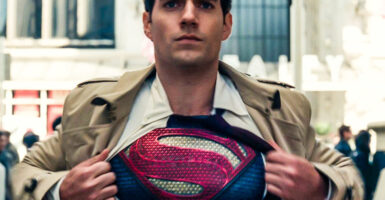A Fantastic Joaquin Phoenix Movie Is Now On Netflix
One of Joaquin Phoenix's finest ever performances is in the meditative and warm science fiction film, now streaming on Netflix.
This article is more than 2 years old
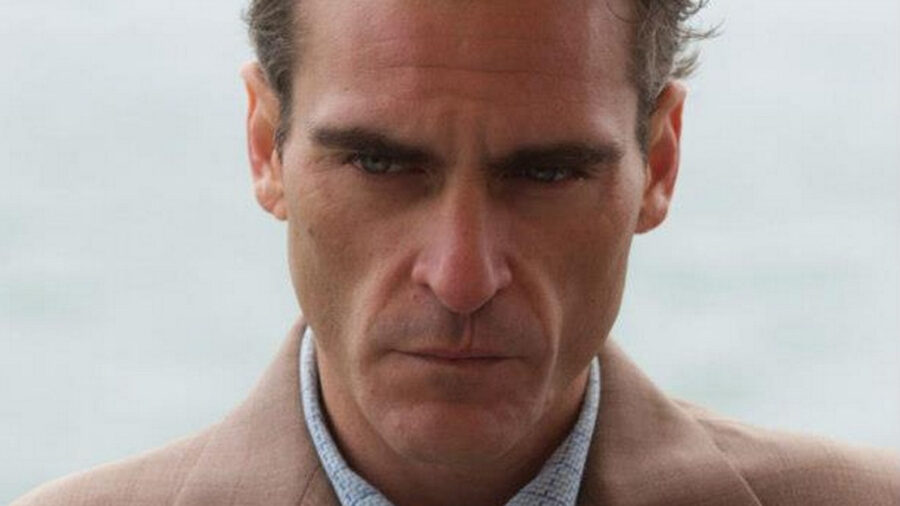
Despite being one of the biggest movie stars in the world, Joaquin Phoenix is curiously unknowable. Unlike some other stars that seem like they might be a blast to hang out with (George Clooney, except for the pranks) or someone who might seem fascinating to observe from a safe distance (hi, Nicolas Cage), Phoenix always seems at a slight remove. For many of his roles, this works wonderfully. In Gladiator, this has the effect of making his spoiled, murderous Emperor Commodus so distanced from the human beings he sends to their deaths that he seems practically alien. In Joker, his Arthur Fleck suffers a complete psychotic breakdown and assumes a new identity after being unable to reconcile himself to the world. But perhaps best of all, in Spike Jonze’s Her, that sense of distance from humanity functions to show healing and growth in two very different kinds of being. The movie just became available to stream on Netflix USA as of April 1.
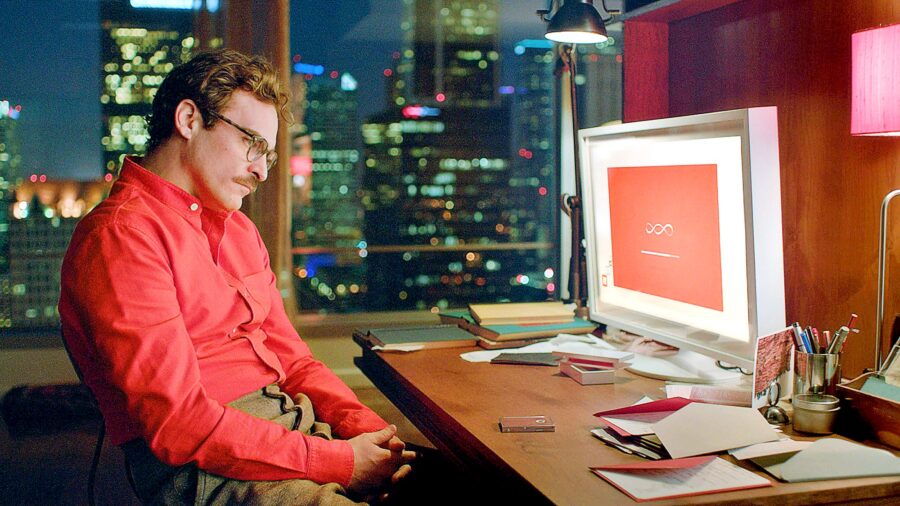
Released in 2013, Her stars Joaquin Phoenix as Theodore Twombly as a mild-mannered, socially awkward man in a Los Angeles of the unspecified near future. For a living, he writes deeply emotional letters on behalf of people who cannot express themselves. While a man who has little ability to connect with others having a job that involves doing that for others is a bit on the nose, Her is a movie of deep sincerity, not purposefully obtuse vagueness. In this highly computerized future world (which, to be fair, is barely distinguishable from our own), Theodore upgrades the operating system of his computer to include an artificially intelligent digital assistant. Nearly on a whim, he decides that it should have a female voice. This is the titular Her, an AI that names itself Samantha (Scarlett Johansson, who replaced Samantha Morton in post-production).
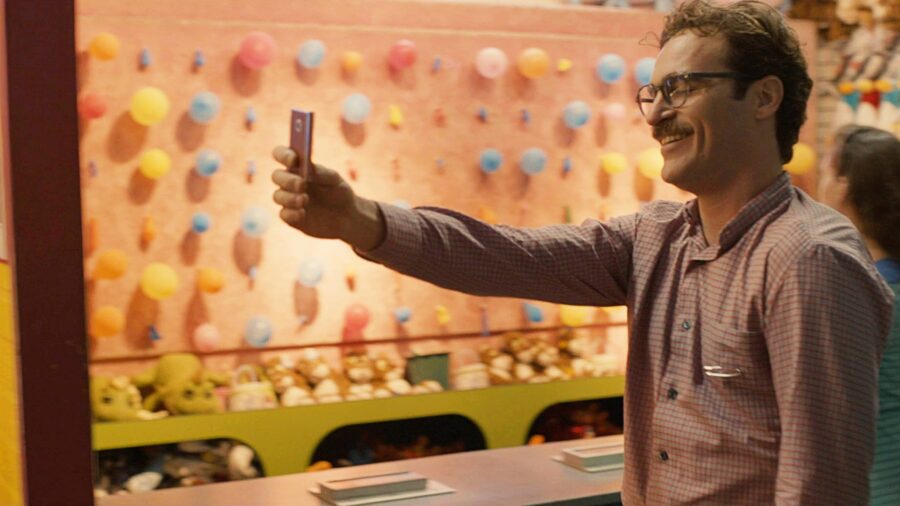
The majority of Her is slow and meditative. It largely concerns the growing relationship between Joaquin Phoenix and Scarlett Johansson, which develops from an essentially administrative one to a warm friendship to eventually a romantic relationship. Though Scarlett Johansson’s Samantha is never seen on screen (being a digital ghost), the connection between her and Phoenix’s Theodore is undeniable and lived it. Over the course of the film, the dynamic between the two grows and has moments of sourness and beauty, and eventually ends. For a movie about a romance between a mustachioed dweeb and an invisible robot, it is astonishingly real to the patterns of many actual relationships in the world.

It is easy to see Her as falling into the classic pattern of “sad man saved by a manic pixie dream artificial intelligence digital assistant.” And that is one legitimate view; undeniably, there is an aspect of the movie in which Samantha helps Theodore to turn into a better and more realized version of himself (even if Joaquin Phoenix keeps the mustache and hornrimmed glasses the whole time). But a key element of that particularly persistent trope is that the female character has no interiority and exists only to help the male character self-actualize. That is emphatically not the case in Her, in which the growth of Samantha as a self-aware being is as important a part of the story as Theodore’s. As much as Samantha encourages Theodore to express himself, push forward in his career, and bond with others, Theodore encourages Samantha to think of herself as an actual person, to express her desire to have a physical presence in the world, and to form friendships of her own. And unlike in a class manic pixie story, it is Samantha that grows beyond the relationship and evolves into a new stage of existence so far beyond Theodore that he cannot conceptualize it. If there is a better metaphor for the distance that can grow between lovers, it is hard to imagine.
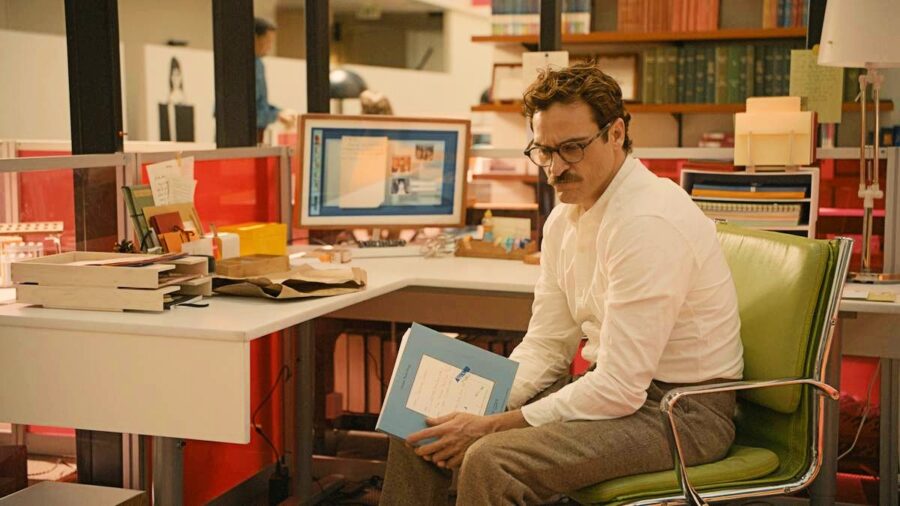
The visual imagery of Her is deliberately in contrast to stereotypes of science fiction. Cinematographer Hoyte van Hoytema (known for his work in Let the Right One In, Interstellar, and Ad Astra) was influenced by the mysterious and luminous photography of Rinko Kawauchi, creating a world of soft pastels and modernist furnishings. The Los Angeles of Her is the diametric opposite of Blade Runner’s rainy and harsh one, despite both movies overtly exploring what it means for artificial beings to interact with human ones. The score (credited to rock band Arcade Fire with composer Owen Pallett) is alternately electronically harsh and winsome, sonically establishing a world in which alienation and intimacy are never far from each other. Like many great movies, no single element of it is the single key one, but none of them could exist without the others.
Her was well received by critics, and a moderate success at the box office (though its quiet and mature take on science fiction was never going to do Avatar numbers). The movie was created in part by Spike Jonze processing his divorce from fellow filmmaker Sofia Coppola. It is not hard to see something of Jonze in Joaquin Phoenix’s Theodore; one of the subplots of the movie is Theodore learning to accept his own divorce and appreciate the significance of a relationship even after its end. And in the end, a movie cannot have a better message to relay than to appreciate the people who have grown with you, digital or human.












